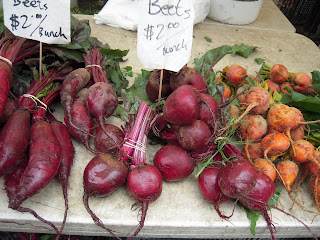The Veggies:
Peas
This picture illustrates the end of the pea season. Peas do best when grown in cool weather. They can be sown in very early spring and are usually harvested in early summer. A second harvest is possible in the fall but since the seeds like it cool and the plants can't handle frost, the window for a productive crop is narrow. The good news is that in a small urban garden, plants such as peas, which thrive when grown on vertical structures, are priceless in the urban gardener's attempt to maximize a small space.
Winter Squash
Squash comes from the genus Cucubita and is made up of both summer and winter varieties. It is native to the Americas and does well in most regions across the U.S. The varieties are named for the season in which they are harvested. Squash come in many colors and sizes, anything along the green to orange spectrum. Both summer and winter squash seeds are sown in the early spring. Summer squash is harvested when its name dictates (in the summer). Winter squash is left to grow and develop a hearty rind with which it can withstand the elements in early fall. Once it is harvested, winter squash may also be stored longer due to its protective rind (which explains why the pumpkins in your seasonal front step decorations can last so long!).
Beets
Beets are a biennial member of the Beta vulgaris genus. Biennial means that they have two season each year. They can be planted in early spring and harvested in early summer and then planted again in early fall to be harvested in the early winter (before the first frost). You can also continuously sow seeds for the duration of the two seasons and some beets will be productive. Beets can be stored in the ground up until the first frost so you can just run outside and pluck a beet for dinner as needed!
Golden Turnip
Turnips are a member of the Brassica family which includes cabbages and broccoli among many other plants. Turnips can be harvested in the spring and fall with a break for the hottest part of the summer (similar to beets). For a late spring harvest, turnips must be planted as soon as the chance for frost is over. However, turnips are more commonly planted in late summer for an autumn harvest.
Swiss Chard
Chard is another member of the Beta vulgaris genus. Its roots run very deep so make sure your soil is cultivated down to the appropriate depth. Chard can be sown in early spring and will be productive through the following early winter (if the right precautions are taken like setting up protective frames or adding mulch around the plant). To harvest Swiss chard, pull the off the outer leaves from each plant. This will encourage the inner leaves to grow larger and then be harvested and so on.
Parsnips
I have a feeling we will only see more of parsnips as winter approaches. It is one of the few plants that can be stored over winter in the ground and whose flavor actually improves with the cold. It is a root vegetable and its season is long so parsnips should be sown in very early spring. It can be harvested whenever you feel like eating it through the winter (as long as the ground is not frozen). Then, once spring begins, dig them all up before they begin to sprout again.












No comments:
Post a Comment